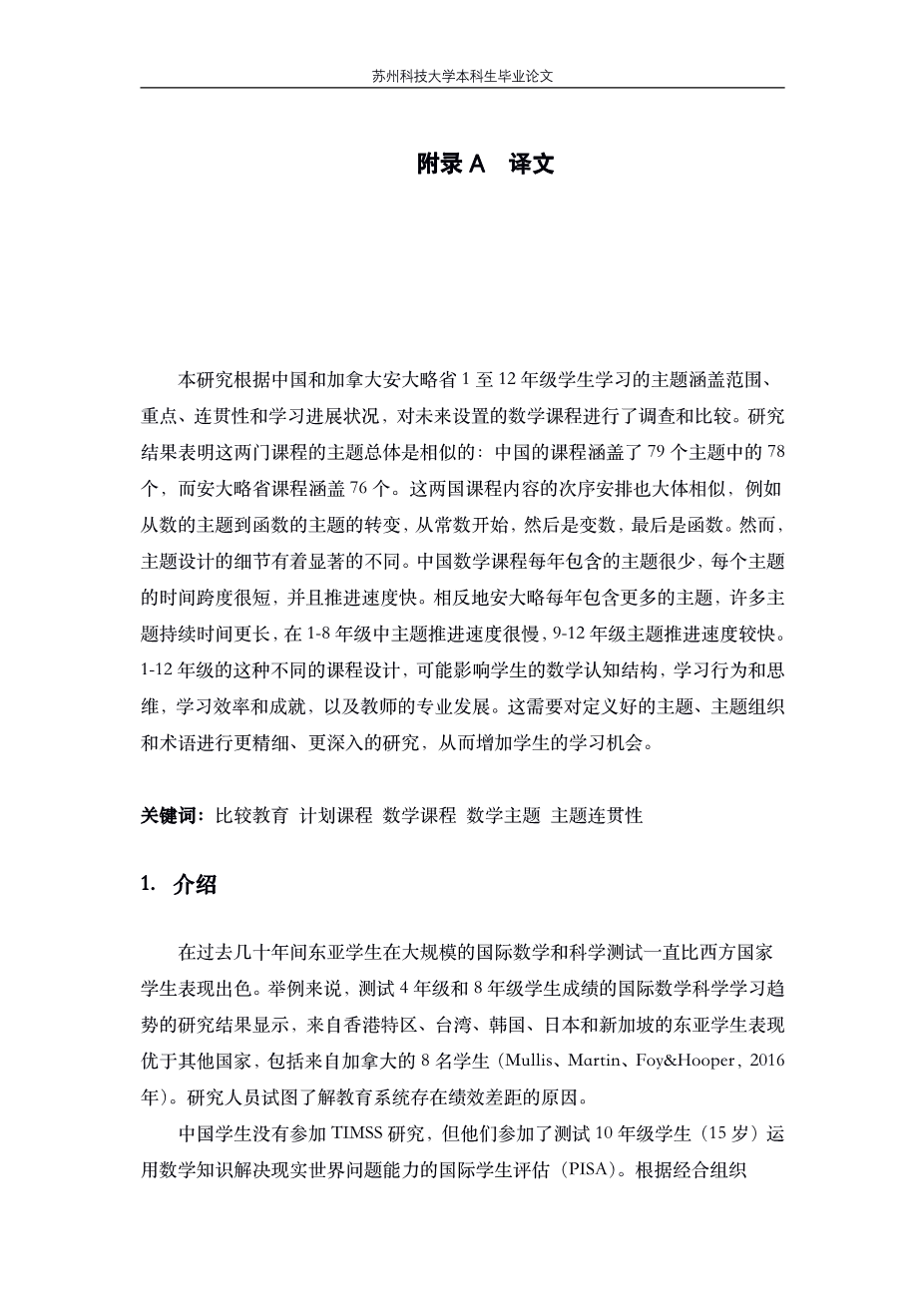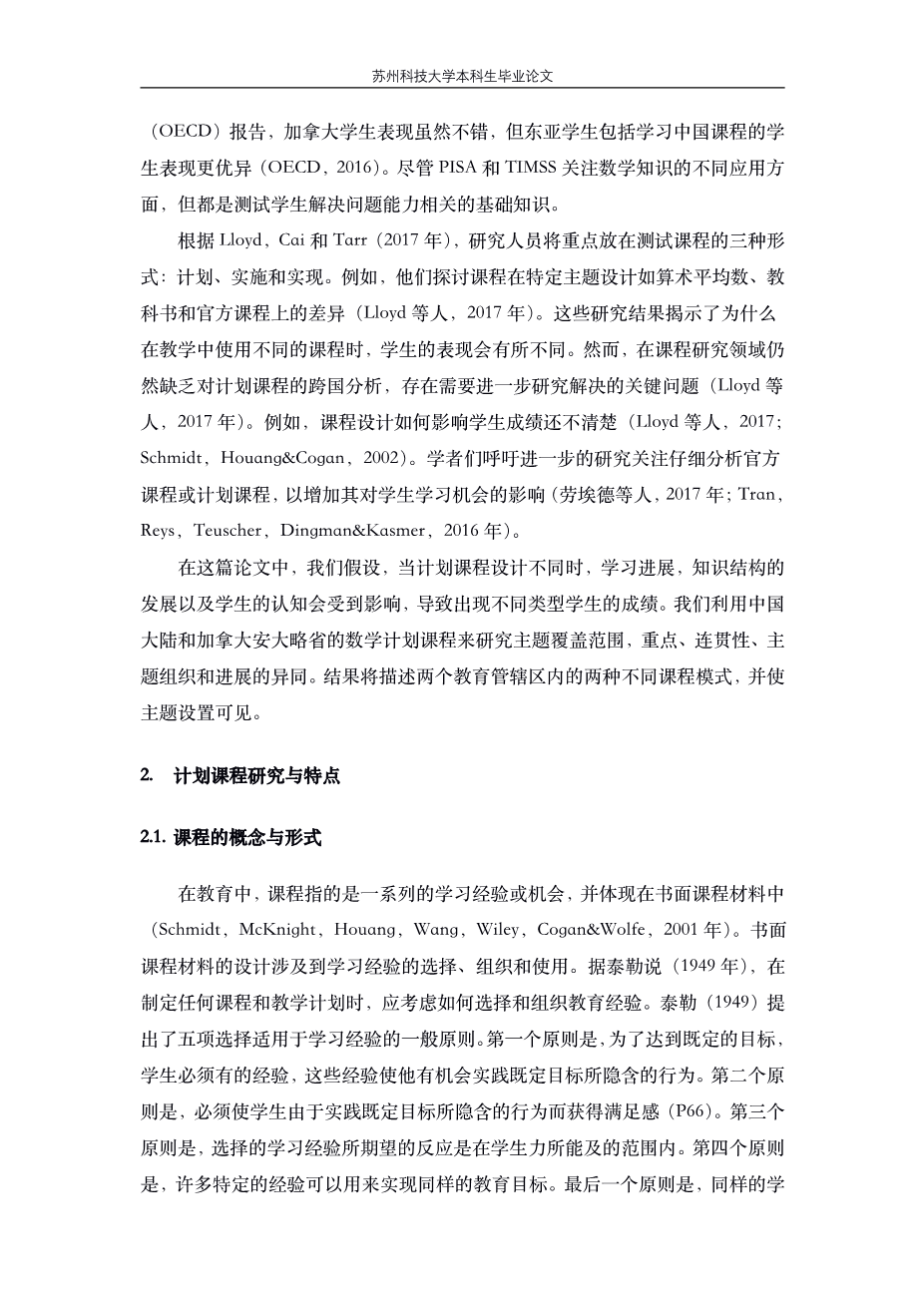Curriculum Matters: What We Teach and What Students Gain
Abstract
This study examined and compared the intended mathematics curricula according to topic coverage , focus , coherence , and learning progression in grades 1–12 within China and the province of Ontario , Canada . The findings show that the overall topics in the two curricula are similar: Chinese curriculum covers 78 topics out of 79 while the Ontario curriculum covers 76.The two curricula also share a similar general sequence such as topics for transfer stages from numbers to functions by starting with constant mathematics, then variable mathematics, and finally functions. However, the detailed topic design of the 2 curricula differs markedly.The Chinese curriculum includes few topics in each year, a short duration or span of each topic, and a fast-paced topic progression. The Ontario curriculum, in contrast, includes more topics each year, longer duration of many topics, and a small pace of topic progressionin grades 1 – 8 and a fast pace of topic progression in grades9 – 12. Because of different curriculum designs in grades1 – 12, the intended curriculum mayinfluence studentsrsquo; cognitive structures of mathematics, learning behavior andthinking, learning efficiency and achievement, and teachersrsquo; professional development. This calls for more refined andadvanced research onthe definedlist of topics,topic organization, andterms to study curriculum in order to increase student learning opportunities.
Keywords Comparative education Intended curriculum Mathematics curriculum . Mathematics topics .Topic coherence
Introduction
Over the last few decades, East Asian students have consistently outperformed their counterparts within Western countries in large-scale international mathematics and science examinations.For example, the results of Trends in International Mathematics and Science Study (TIMSS), which tests studentsrsquo; achievement at grades 4 and 8, showed that East Asian students,from HongKong SAR,Taiwan,Korea,Japan, and Singapore, outperformed their counterparts in other countries including Canadian grade eight students (Mullis, Martin, Foy amp; Hooper, 2016). Researchers have sought to understand the reasons why there are performance gaps in education alsystems.
Chinese students do not participate in TIMSS studies, but they do participate in the Programme for International Students Assessment (PISA), which tests grade 10 studentsrsquo; (at age 15 years) abilities in applying mathematics knowledge to solve real-world problems. According to the Organisation for Economic Co-operation and Development (OECD) reports, Canadian studentsrsquo; performance, though good, was outperformed by East Asian students including those within the Chinese curriculum (OECD, 2016). Although PISA and TIMSS focus on different aspects of applying mathematics knowledge, both test studentsrsquo; fundamental knowledge which is linked to studentsrsquo; ability to problem solve.
According to Lloyd,Cai and Tarr(2017), researchers have focused on examining three forms of curriculum: intended, implemented, and attained. For example, they have examined curriculum differences in the design of specific topics such as arithmetic average,textbooks, andofficial curriculum(Lloydetal., 2017).These research results have yielded some insights into why students perform differently when different curricula are used in teaching and learning. However, the field of curriculum studies stilllacks cross-national analysis of intended curriculum andhas keyissues that require furtherstudy(Lloydetal., 2017).For example,itis notclearhow curriculumdesign impacts studentsrsquo; achievement(Lloyd et al., 2017;Schmidt, Houangamp;Cogan,2002). Scholars have called for further research focused on the careful analysis of official curriculum or intended curriculum to increase its impact on student learning opportunities(Lloyd et al., 2017;Tran, Reys,Teuscher, Dingmanamp;Kasmer,2016).
In this paper, we assume that, when the intended curriculum design is different, the learning progression, the development of knowledge structures, and the cognition of students will be affected, leading to different types of studentsrsquo; achievement. We employ the intended mathematics curricula from mainland China and the Canadian province of Ontario to examine similarities anddifferences in terms of topic coverage, focus, coherence, topic organization, and progression. The results will depict two different curriculum patterns within two educational jurisdictions and make topic setting visible.
Intended Curriculum Research and Characteristics
Concept and Forms of Curriculum
Within education, curriculum refers to a sequence of learning experience or opportunities and is embodied in written curriculum materials (Schmidt, McKnight, Houang, Wang, Wiley, Cogan amp; Wolfe, 2001). The design of written curriculum materials is involved (p.66).Thethirdisthe reactionsdesired experiencewithinthe rangeofpossibilityfor studentsrsquo; involvement. The fourth principle is that many particular experiences can be used to attain the same educational objectives. The final principle is that the same learning experience will bring several outcomes.
Tyler (1949) emphasized the organization of learning experiences because this influences the efficiency of instruction and the degree to which it can effect major educational changes for learners. He stated three major criteria to consider for effective organization: continuity, sequence,and integration. These are Bthe basic guidingcriteria in the building of an effective scheme of organization of learning experience^ (p. 86).
According to Tyler(1949), continuity means the vertical reiteration of major curriculum elements and involves the recurring emphasis in the studentsrsquo; experience upon particular curriculum elements. Sequence is linked to continuity but
剩余内容已隐藏,支付完成后下载完整资料


英语译文共 31 页,剩余内容已隐藏,支付完成后下载完整资料
资料编号:[409473],资料为PDF文档或Word文档,PDF文档可免费转换为Word


